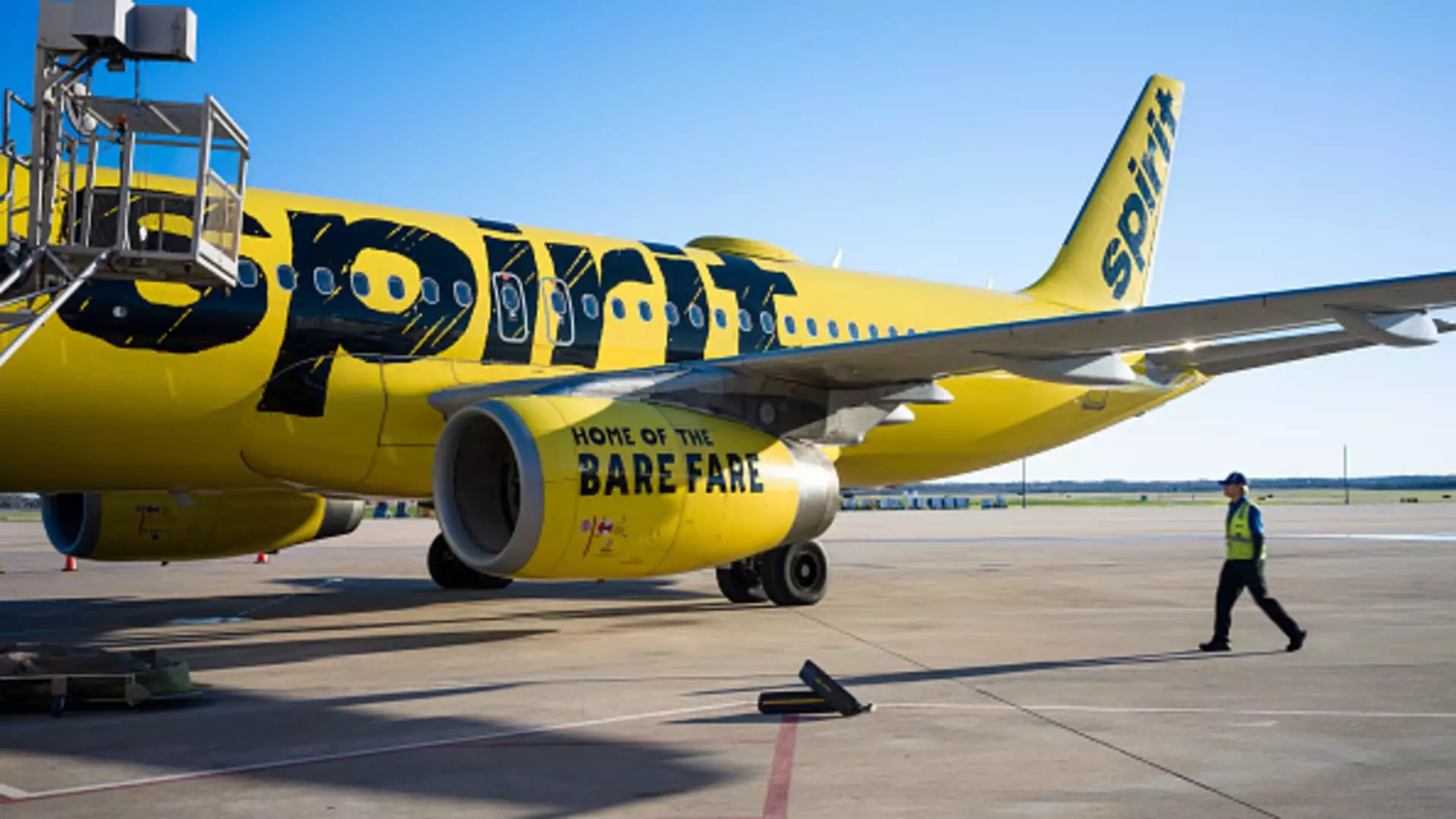On a pivotal Friday, Spirit Airlines disclosed significant developments regarding its financial trajectory. The airline reached a crucial agreement with its credit card processor, extending its debt refinancing timeline to December, which was a momentary reprieve before it faced a looming deadline. Earlier in the week, Spirit exhausted its entire $300 million revolving credit facility, illustrating the pressing need for immediate fiscal resources. As the year approaches its end, Spirit anticipates finishing with slightly over $1 billion in liquidity, which, while seemingly substantial, raises questions about sustainability and longer-term viability.
In a filing, Spirit indicated that it remains engaged in “active and constructive discussions” with holders of its senior secured notes due in 2025 and convertible notes due in 2026. This aspect of financial negotiations underscores the precarious position in which the airline finds itself, necessitating delicate negotiations with creditors to stave off immediate financial distress. The airline’s stock performance tells another story, as shares plummeted to a new low of less than $1.50 per share, a staggering drop of roughly 3% in a single day. This total decline of more than 90% over the year illustrates growing investor apprehension regarding Spirit’s financial health.
The airline has unveiled a variety of operational adjustments in its quest for financial stability. To conserve cash, Spirit has resorted to furloughing employees, reducing its flight schedule, and deferring deliveries of new aircraft. These measures, invariably painful, highlight the gravity of the conditions facing the low-cost carrier. Compounding these challenges is the significant grounding of many aircraft, attributed to a widespread engine recall by Pratt & Whitney. This operational bottleneck not only limits Spirit’s capacity to serve customers but also exacerbates existing financial woes in an already strained environment.
Market sentiments reflect a deep unease regarding Spirit Airlines’ ability to navigate these troubled waters. Recent reports have suggested that the airline is exploring the grim possibility of filing for bankruptcy, a move that would transform its operational landscape entirely. The insurmountable pressures from weaker-than-expected bookings and the failed acquisition attempt by JetBlue Airways—blocked by a federal court on antitrust grounds—further diminish the airline’s prospects of recovery. The sheer magnitude of these setbacks invites speculation about the future viability of Spirit Airlines in an industry that demands agility and financial resilience.
As Spirit Airlines attempts to negotiate its future amid visible turbulence, stakeholders must brace themselves for an unpredictable journey ahead. The combination of struggling stock performance, operational overhauls, and potential bankruptcy investigations presents a cocktail of uncertainty for employees, investors, and customers alike. While Spirit’s immediate liquidity position offers a temporary lifebuoy, the fundamental structural issues at play suggest that significant changes may be necessary for the airline to regain stability and confidence in the volatile aviation market. The road ahead remains fraught with challenges, as is often the case in the high-stakes arena of commercial aviation.

